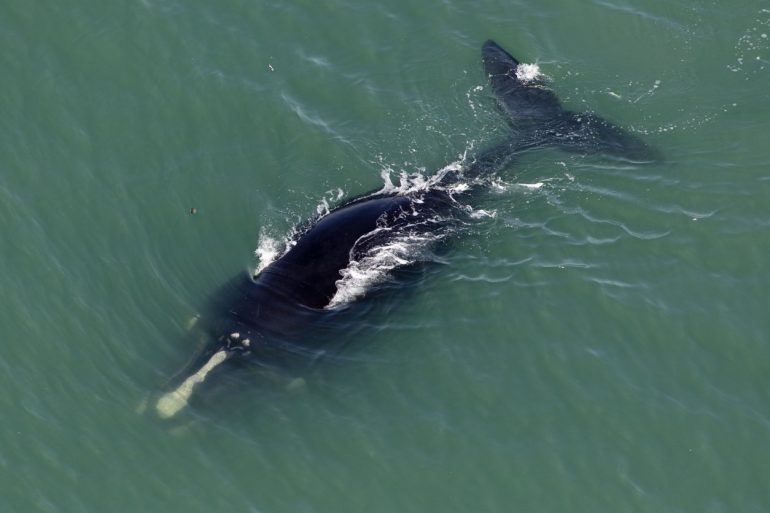The consequences of climate change are so complex: North Atlantic right whales, which are threatened with extinction, are being driven from their protected habitats into dangerous waters by changing ocean currents, report marine biologists. There they are more likely to collide with ships and get caught in fishing vessels. Researchers say that without further protective measures, the tragic history of this whale species is likely to end in its total loss in the coming decades.
Once upon a time, many thousands of North Atlantic right whales swam (eublena glacialis) off the coasts of Europe and North America – but this changed rapidly in the era of commercial whaling. Whales, which weigh up to 100 tons, were among the harpoons’ sights, as they swim particularly leisurely. Its popularity among whalers also shaped the English name of this species: “right whale” – “real whale”. In the end, except for a few animals, the northern Cape population was slaughtered.
The species was placed under protection in the early 1930s – but since then its population has barely recovered compared to other whales. Since small populations along the east coast of the United States have been declining recently, the northern right whale is listed as “critically endangered” on the IUCN’s list of threatened species as of 2020. Researchers led by Charles Green of Cornell University in Ithaca also show a declining trend in their study with data: according to them, the population has decreased significantly, especially since 2010. At the beginning of the decade there were still over 500 animals – experts now estimate the population to be only 356 whales.
shrinking balance
But what is bothering these whales? It was already known that northern right whales particularly frequently collided with ships and became entangled in fishing lines – with fatal consequences. Scientists are now showing that these threats are linked to the consequences of climate change: As their data shows, warmer waters in the Gulf of Maine are increasingly driving animals from this protected marine area into the unprotected Gulf of St. .
“Most of the warming in the Gulf of Maine isn’t coming from the atmosphere or the ocean surface, as you might imagine,” Green says. Instead, it is due to a change in water movements in the North Atlantic, which eventually goes back to climate change as well. As the researchers explain, the Gulf of Maine is shaped by the warm waters of the Gulf Stream. In the past ten years, however, much has changed in the present. “As the climate warms, the overturning circulation is slowing, causing the Gulf Stream to move north and also fill the Gulf of Maine with warm and salty water,” says Green.
theft with deadly consequences
This effect indirectly harms northern capers, explain marine biologists: Warming is causing a decline in populations of small crustaceans in the Gulf of Maine, which serve as food for whales. As the scientists report, there are indications that this loss of food has reduced whale calving rates and eventually forced the animals to abandon their traditional midsummer foraging grounds in the Gulf of Maine. Apparently they move north: since 2015, more and more northern right whales have been observed roaming the cooler waters of the Gulf of St. Lawrence.
But these are problematic new hunting grounds, as the Gulf of Maine is comparatively calm and special efforts are made to protect marine animals, busy shipping routes through the Gulf of St. Lawrence and fishing vessels. The danger increases. . The impact of emigration is already clearly noticeable in this context, say the scientists: There have been a number of deaths among northern capers in the Gulf of St. Lawrence in recent years.
“Every year more animals die,” says lead author Erin Meyer-Gutbrod, of the University of South Carolina at Columbia. Without a trend reversal, populations will continue to decline and species will go extinct in the coming decades, marine biologists fear. Your only hope now is new guidelines for rope-free gear, as well as the enforcement of speed limits for ships and funding for the installation of surveillance systems. “Safety measures will have to be tightened quickly, however, before this species goes far enough that there is no turning back,” says Meyer-Gutbrod.
Source: Cornell University, Subject: Oceanography, DOI: 10.5670/ocean.2021.308

Web guru. Amateur thinker. Unapologetic problem solver. Zombie expert. Hipster-friendly travel geek. Social mediaholic.





